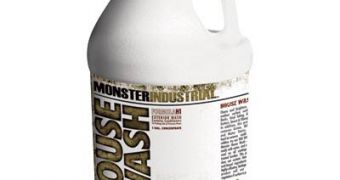A fortunate accident allowed scientists to finally figure out how bleach destroys bacteria. Although the chemical has been used to disinfect and clean many surfaces over the past two centuries, no one actually knew how it worked, thus making this discovery a very important one. Thursday, November 13, researchers at the University of Michigan (UM) published their find in the journal Cell.
They say that hypochlorus acid is the main active ingredient in bleach. This chemical has a direct effect on proteins inside bacterial cells, namely, it forces them to contract, which causes the whole bacteria to collapse on itself, much like a black hole, only smaller. As protein chains attempt to escape the action of the acid, they are regulated by a bacterial protein, known as heat shock protein 33 (HSP33).
This protein was under study, when scientists noticed the way it reacted to hypochlorus acid. It became active when the bacteria was in distress, and then forced proteins to bundle up closely together, so as to escape being dissolved by the bleach. When these proteins clamp up together, they are no longer able to extract all the nutrients they need from the environment, which causes the entire bacterial cell to eventually die.
Marianne Ilbert, who is a postdoctoral fellow at the UM lab, said "Many of the proteins that hypochlorite attacks are essential for bacterial growth, so inactivating those proteins likely kills the bacteria." Ursula Jakob, referring to the fact that the discovery was an accident, said in a statement that "As so often happens in science, we did not set out to address this question."
The researchers drew parallels between the way hypochlorus acid acts, in both humans and bacteria. Our own immune system works much like that of our bacterial counterparts, with the only difference being that we don't collapse in ourselves when we get a regular headache. Inside our bodies, immune system cells trigger the production of this acid, which helps kill intruders.
However, in the process, it also kills healthy cells, which, scientists say, explains why chronic inflammations trigger the deterioration of surrounding tissue. Jakob added "Hypochlorous acid is an important part of host defense. It's not just something we use on our countertops."

 14 DAY TRIAL //
14 DAY TRIAL //